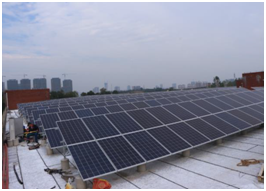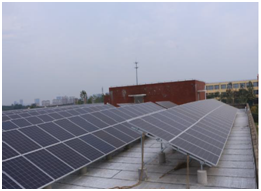Environmental protection
Sustainable Supply Chain
Z-COM closely collaborates with its suppliers to enhance competitiveness, secure brand orders, improve management capabilities, reduce additional costs, and establish a reliable supply chain for sustainable operations. This partnership aims to uphold the Responsible Business Alliance (RBA) Code of Conduct while also assessing the impact of procurement activities on the environmental and social aspects of the supply source communities. By fostering partnerships with suppliers, Z-COM strives to minimize operational impacts on the environment and fulfill its corporate social responsibilities. The relevant requirements are outlined as follows:
1. During the evaluation of new suppliers, it is required that suppliers comply with local government regulations related to air pollution prevention, water pollution prevention, waste management, and other environmental regulations.
2. Suppliers are expected to adhere to local safety, health, and fire regulations. They should also meet the Occupational Safety and Health (OSH) standards recognized by safety and health management systems.
3. Z-COM promotes "green procurement" and mandates that suppliers provide declarations ensuring that their products do not contain internationally banned substances harmful to the environment. Additionally, products must meet requirements such as those stipulated by EU RoHS/REACH regulations.
4. Suppliers are required to establish management procedures and implement training and engineering improvements to mitigate potential safety hazards for workers (such as electrical and other energy sources, fire, transportation, and fall risks).
5. Suppliers must assess and control physical, chemical, and biological hazards in the workplace and implement management measures or engineering improvements accordingly.
For supplier services, quality, delivery, safety, and hygiene, evaluations are conducted, and key suppliers are subject to regular audits. Suppliers that do not meet the established standards must propose improvements and provide review reports. When necessary, on-site audits are conducted again to ensure effective enhancements.
Climate Change Assessment and Response Measures
In response to the risks posed by global climate change, regulations and agreements related to this matter are becoming increasingly stringent. To address the impact of climate change on business operations and to provide transparent disclosure of climate change information, our company has initiated a comprehensive assessment and risk identification process regarding climate change. This includes evaluating the direct and indirect impacts of extreme weather events, as well as the transformative effects stemming from regulatory, technological, or market shifts, and other societal and human-related dimensions that affect our operational activities. This proactive analysis aims to strengthen our climate change governance, employing a systematic approach to risk reduction while seizing opportunities. Through these efforts, we strive to contribute to the sustainable environment, enhance industry competitiveness, and contribute to a more resilient future.
Climate Risk | Potential
Impacts | Climate Opportunities | Response Measures | |
Rising Temperatures | Unstable Water and Electricity Supply Increased Greenhouse Gas Emission Costs | Costs of Low Carbon and Energy-Efficient Product Development
| Air Conditioning Systems: Utilizing Energy-Efficient Chilled Water Units and Centralized Temperature Control
| |
Unstable Water and Electricity Supply | Production Disruptions and Increased Operating Costs | Developing Green Energy, Enhancing Water Resource Efficiency, and Exploring Emerging Water Sources
| Promoting "Turn Off the Lights": Placing Visible Reminders Near Light Switches and Nighttime Patrols Energy-Efficient Lighting: As part of our commitment to sustainability, we have undertaken the replacement of conventional lighting with energy-efficient LED fixtures. This initiative is now 98% complete throughout our facility. The transition to LED lighting substantially reduces energy consumption while enhancing overall illumination quality. Energy-Saving Measures in the Computer Server Room: Virtualization of Servers for Power and Equipment Efficiency | |
Increased Greenhouse Gas Emission Costs | Limited Production Capacity Expansion and Increased Operating Costs | Participating in Renewable Energy Initiatives and Carbon Market Trading
| Initiating Eco-Friendly Measures Across Product Design, Harmful Substance Reduction, and Packaging for Shipment We have taken a comprehensive approach to environmental responsibility, beginning with product design and extending to minimizing the use of environmentally harmful chemicals in production processes.
| |
Costs of Low Carbon and Energy-Efficient Product Development | Increased Costs of Low Carbon and Energy-Efficient Product Development | Developing or Expanding Green Energy Products and Services
| Dedicated to Providing Green Energy: Subsidiary Installs 350 kW/h Solar Photovoltaic System for Self-Consumption Paperless Operations: Utilizing Electronic Signatures to Reduce Paper Usage and Promote Reuse | |
Impact on Company Image | Failure to Meet Stakeholder Expectations and Damage to Company Image | Enhancing Long-Term Investor Engagement | Strengthening Green Manufacturing: Compliant with Environmental Regulations and Advanced Green Standards. Continuous Process Improvement for Reduced Pollution, Energy Consumption, and Enhanced Safety
| |
Green
products

Z-COM requires its affiliated suppliers to provide an assurance that the supplied components, starting from the date of supply, comply with the content standards of prohibited or restricted substances as outlined in the "List of Environmental Prohibited/Restricted Substances Management" instructions. Suppliers are requested to sign a guarantee letter and submit third-party testing reports. Additionally, they are encouraged to engage qualified vendors for waste recycling and collection, aiming to reduce waste volume. Z-COM also reinforces the use of safer alternatives for hazardous substances, aiming to avoid harmful materials and adhere to the principles of environmental sustainability.
In accordance with the Responsible Business Alliance (RBA) Code of Conduct, Z-COM conducts self-assessments in areas such as labor, health and safety, environmental practices, ethics, and management systems. The company actively pursues international certifications. This approach not only fosters trust among customers, employees, and suppliers but also fulfills corporate responsibilities towards the environment, economy, and society. Through these efforts, Z-COM remains committed to upholding ethical and environmentally conscious business practices.
Energy Efficiency, Carbon Reduction, and Green Environment
Z-COM is committed to promoting a greener environment through various approaches, starting from product design, reduction of harmful substances, and eco-friendly packaging practices. We prioritize minimizing the use of environmentally hazardous chemicals in our products and processes. Our research and development teams collaborate closely with customers, material suppliers, and production departments to ensure the development of products that are more environmentally friendly.
Addressing global warming is not only a crucial issue to be addressed but also a responsibility as corporate citizens. We actively advocate for the development and implementation of climate adaptation strategies. Guided by the principles of "Caring for the Earth," "Sustained Resources," and "Environmental Sustainability," we have established corporate environmental and energy management practices. We encourage the adoption of remote meetings and carpooling mechanisms to reduce carbon emissions effectively, aligning with our commitment to a sustainable future.At Z-COM, our efforts extend beyond business operations – they reflect our dedication to safeguarding the planet for current and future generations.
Roof-Mounted Solar Photovoltaic Systems
Since 2017, Z-COM has been actively engaged in the establishment of roof-mounted solar photovoltaic systems. The journey began with the installation of a 350KW solar photovoltaic system on a factory roof in Jiujian Economic and Technological Development Zone. This system generates over 350,000 kilowatt-hours of clean energy annually, translating to a reduction of approximately 200 tons of carbon emissions – equivalent to the carbon sequestration capacity of more than 13.3 hectares of forests. The solar energy generated contributes to nearly 30% of the total annual electricity consumption.
This initiative not only meets the daily electricity demand of the factory but also enables the surplus energy to be sold back to the grid, thereby optimizing overall energy efficiency. The utilization of thermal-insulated solar panels on the roof prevents direct exposure to sunlight, leading to reduced indoor temperatures, decreased reliance on air conditioning, and a noticeable reduction in summer electricity consumption. Furthermore, the area surrounding the building is landscaped with lawns, creating a green building environment.
To achieve maximum efficiency, a network communication system monitors the power generation efficiency of the system, facilitating optimal energy output. In alignment with global environmental protection and new energy policies, Z-COM is dedicated to energy conservation, investing in "clean energy" by deploying renewable energy sources. With the goal of promoting the green economy industry, we have worked alongside EPC customers to establish hundreds of megawatts of solar energy and energy storage facilities across China and Taiwan. These efforts contribute to a more sustainable and vibrant living environment for humanity.


Environmental, Health, and Safety Policy
Z-COM integrates environmental responsibility into every phase of the design, development, manufacturing, and sales of wireless communication systems. Committed to corporate social responsibility and eco-friendly activities, we strive for continuous improvement in environmental performance. To achieve this, we have established an environmental management system and pledge our commitment to sustainable development through the following directions:
l Compliance:Our
business activities align with environmental regulations and uphold the
standards of advanced green practices in leading nations.
l Product Development: Our products are developed with a focus on eco-friendliness, embracing green concepts while ensuring product safety is paramount in our design process.
l Continuous Improvement: We continuously enhance processes, work environments, and equipment to reduce pollutant emissions, minimize resource consumption, and mitigate health and safety risks.
l Risk Management: Identifying potential risks and actively mitigating them are integral to our approach.
l Operational Excellence: We bolster operational management and employee training to prevent accidents, pollution, and occupational injuries or illnesses.
l Quality Assurance: We strive for 100% adherence to customers' expectations of green and environmentally friendly product quality.
l Supplier Accountability:We rigorously demand that our suppliers provide materials that meet the most advanced green standards.
l Stakeholder Communication:We communicate and educate employees, customers, suppliers, and visitors about environmental-related information.
This policy underscores our dedication to a sustainable future, ensuring that our business practices are not only environmentally sound but also prioritize the health and safety of our employees and stakeholders.
Product Information and Labeling Requirements
Waste
Electrical and Electronic Equipment Directive(WEEE)
European Union
Z-COM incorporates waste reduction and resource reuse into our product design from the outset, considering customer needs. We utilize eco-friendly materials and low-pollution alternative substances. Our design approach aims to minimize natural resource consumption and enhance recycling.
Registration, Evaluation, and Authorization of Chemicals(REACH)
European Union
REACH is an EU regulation concerning the registration, evaluation, authorization, and restriction of chemicals. Since June 1, 2007, any Substance of Very High Concern (SVHC) exceeding 0.1% and imported or manufactured in quantities exceeding 1 ton per year must be reported to the European Chemicals Agency (ECHA) by EU manufacturers or importers. Z-COM encourages suppliers to proactively reduce and eliminate the use of such chemicals.
Restriction of Hazardous Substances Directive, (RoHS)
In 2015, the EU officially amended the RoHS directive (EU) 2015/863 to include four phthalates (DEHP, BBP, DBP, DiBP) as controlled substances. Due to the increasing environmental impact of discarded electrical and electronic products, Z-COM ensures that all our products are fully compliant with RoHS limits. This guarantees no instances of product returns due to RoHS violations.
Restricted Substances Concentration Limits
The following table outlines the concentration limits for restricted substances:
Nameof Substance | Concentration
Limit |
Lead(Pb) | <1000ppm |
Cadmium(Cd) | <100ppm |
Mercury(Hg) | <1000ppm |
Hexavalent Chromium(Cr+6) | <1000ppm |
Polybrominated Biphenyl(PBBs) | <1000ppm |
Polybrominated Diphenyl ether(PBDEs) | <1000ppm |
Di(2-ethylhexyl) phthalate (DEHP) | <1000ppm |
Butyl benzyl phthalate (BBP) | <1000ppm |
Di-n-butyl phthalate (DBP) | <1000ppm |
Diisobutyl phthalate (DIBP) | <1000ppm |
Sustainable Environment
Annual Goals and Achievements in Water and Electricity Management for Energy Conservation
Type | Performance Measurement Indicators | Energy Saving Goals for 2022 | Actual Achievement | Energy Saving Goals for 2023 |
Energy Conservation | Annual Total Electricity Consumption / Previous Year's Total Electricity Consumption | Maintain a ±3% reduction in electricity consumption until the replacement of the chiller unit (anticipated in 2026). | ↓19.1% (achieved) | Maintain a ±2% reduction in electricity consumption. |




